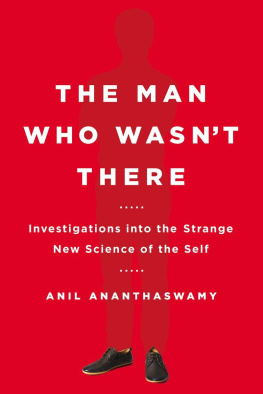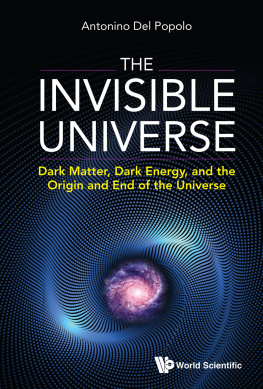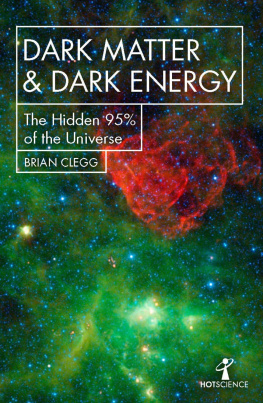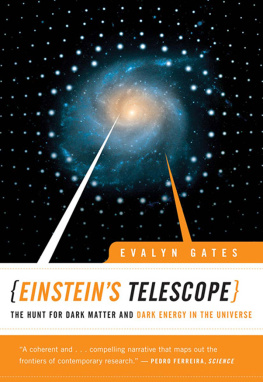HOUGHTON MIFFLIN HARCOURT
2010 BOSTON NEW YORK
Copyright 2010 by Anil Ananthaswamy
ALL RIGHTS RESERVED
For information about permission to reproduce selections from
this book, write to Permissions, Houghton Mifflin Harcourt Publishing
Company, 215 Park Avenue South, New York, New York 10003.
www.hmhbooks.com
Library of Congress Cataloging-in-Publication Data
Ananthaswamy, Anil.
The edge of physics : a journey to Earth's extremes to unlock the
secrets of the universe / Anil Ananthaswamy.
p. cm.
Includes bibliographical references and index.
ISBN 978-0-618-88468-1
1. PhysicsPopular works. I. Title.
QC 24.5. A 53 2010 530dc22
Book design by Melissa Lotfy
Printed in the United States of America
DOC 10 9 8 76 5 4 3 2 1
Portions of the prologue and chapters 6, 8, 9, and 10 appeared in New Scientist
magazine and on NewScientist.com in slightly different form.
To my parents, Shantha and Narayana Iyer Ananthaswamy
CONTENTS
List of Illustrations viii
Author's Note ix
Prologue 1
1 Monks and Astronomers 9
2 The Experiment That Detects Nothing 31
3 Little Neutral Ones 56
4 The Paranal Light Quartet 81
5 Fire, Rock, and Ice 109
6 Three Thousand Eyes in the Karoo 135
7 Antimatter over Antarctica 168
8 Einstein Meets Quantum Physics at the South Pole 194
9 The Heart of the Matter 222
10 Whispers from Other Universes 248
Epilogue 273
Appendix I: The Standard Model of Particle Physics 283
Appendix II: From the Big Bang to Now: The Standard Model
of Cosmology 285
Notes 287
Bibliography 293
Acknowledgments 298
Index 301
LIST OF ILLUSTRATIONS
All photographs are by the author except as noted.
A woodpecker at the New Camaldoli Hermitage in Big Sur, California. (page 9)
Twenty-seventh level of the Soudan Mine, site of the Cryogenic Dark Matter Search experiment in Soudan, Minnesota. (page 31)
Section of the old Trans-Siberian Railway on the shores of Lake Baikal, Siberia. (page 56)
The Very Large Telescope, Cerro Paranal, Chile. Copyright ESO/H. H. Heyer. (page 81)
The Keck I and II and Subaru telescopes on Mauna Kea, Hawaii. Copyright W. M. Keck Observatory. ( page 109)
The Karoo, South Africa. ( page 135)
Launch of the Balloon-borne Experiment with a Superconducting Spectrometer (BESS), McMurdo, Antarctica, in December 2007. ( page 168)
Drilling for the IceCube neutrino telescope, the South Pole, Antarctica. ( page 194)
The ATLAS detector at the Large Hadron Collider near Geneva, Switzerland. Copyright CERNMaximilien Brice. (page 222)
An artist's impression of Planck separating from the rocket's upper stage. Copyright ESAD. Ducros. (page 248)
AUTHOR'S NOTE
This book is more narrative than pedagogical, so concepts in physics are introduced and explained when needed. To aid readers, and prevent a lot of flipping back and forth, I've included two appendices summarizing the standard model of particle physics and the standard model of cosmology (from the big bang to the universe as it is today).
Readers will also notice that I mix up my units for physical quantities, such as length, distance, weight, and volume; for instance, sometimes the height of a mountain is given in meters and sometimes in feet. This is done purely for readability and effect. "A mile-high mountain" just sounds better than "a 1.6-kilometer-high peak"; similarly, a 1,000-foot-high balloon is more dramatic than one 305 meters high. Sometimes the metric system wins: The 27-kilometer-long tunnel housing the Large Hadron Collider near Geneva, Switzerland, would be jarring at 16.777 miles long. The use of different units also reflects the diversity of the places, people, and experiments discussed in this book.
But, after all, who knows, and who can say
whence it all came, and how creation happened?
The gods themselves are later than creation,
so who knows truly whence it has arisen?
Whence all creation had its origin,
he, whether he fashioned it or whether he did not,
he, who surveys it all from highest heaven,
he knowsor maybe even he does not know.
FROM THE RIGVEDA 10.129, CIRCA 1500 B.C.
PROLOGUE
I T WAS THE DAY after Christmas in 2004, a bright winter's day in Berkeley, California. I was outside a caf at the corner of Shattuck and Cedar, waiting for Saul Perlmutter, an astrophysicist at the University of California. The campus is nestled at the base of wooded hills that rise steeply from the city's edge. About 1,000 feet up in the hills is the Lawrence Berkeley National Laboratory (LBNL). In the 1990s, the UC campus and LBNL housed several members of two teams of astronomers that simultaneously but independently discovered something that caused ripples of astonishment, even alarm. Our universe, it seems, is being blown apart.
Perlmutter was the leader of one of those teams. His enthusiastic, wide-eyed gaze, enhanced by enormous glasses, along with a forehead made larger by a receding hairline, reminded me of Woody Allen. But what he had found was no laughing matter. In fact, Perlmutter admitted that their discovery had thrown cosmology into crisis. The studies of distant supernovae by the two teams had shown that the expansion of the universe, first observed by Edwin Hubble in 1929, was acceleratingnot, as many had predicted, slowing down. It was as if some mysterious energy were creating a repulsive force to counter gravity. Unsure as to its exact nature, cosmologists call it dark energy. More important, it seems to constitute nearly three-matter and energy in the universe.
Dark energy is the latest and most daunting puzzle to confront cosmologists, adding to another mystery that has haunted them for decades: dark matter. Nearly 90 percent of the mass of galaxies seems to be made of matter that is unknown and unseen. We know it must be there, for without its gravitational pull the galaxies would have disintegrated. Perlmutter pointed out that cosmologists in particular, and physicists in general, are now faced with the stark reality that roughly 96 percent of the universe cannot be explained with the theories at hand. All our efforts to understand the material world have illuminated only a tiny fraction of the cosmos.
And there are other mysteries. What is the origin of mass? What happened to the antimatter that should have been produced along with matter after the big bang? After almost a century of spectacular success at explaining our world using the twin pillars of modern physicsquantum mechanics and Einstein's general theory of relativityphysicists have reached a plateau of sorts. As Perlmutter put it, he and others are now looking to climb a steep stairway toward a new understanding of the universe, with only a foggy idea of what awaits them at the top.
Part of this seemingly superhuman effort will involve reconciling quantum mechanics with general relativity into a theory of quantum gravity. In situations where the two domains collidewhere overwhelming gravity meets microscopic volumes, such as in black holes or in a big bangthe theories don't work well together. In fact, they fail miserably. One of the most ambitious attempts to bring them together is string theory, an edifice of incredible mathematical complexity. Its most ardent proponents hope that it will lead us not just to quantum gravity but to a theory of everything, allowing us to describe every aspect of the universe with a few elegant equations. But the discovery of dark energy and recent developments in string theory itself have conspired to confound. On yet another winter's day in the Bay Area, more than two years after meeting Perlmutter, I got a taste of just how grave things had gotten in physics.
Next page









